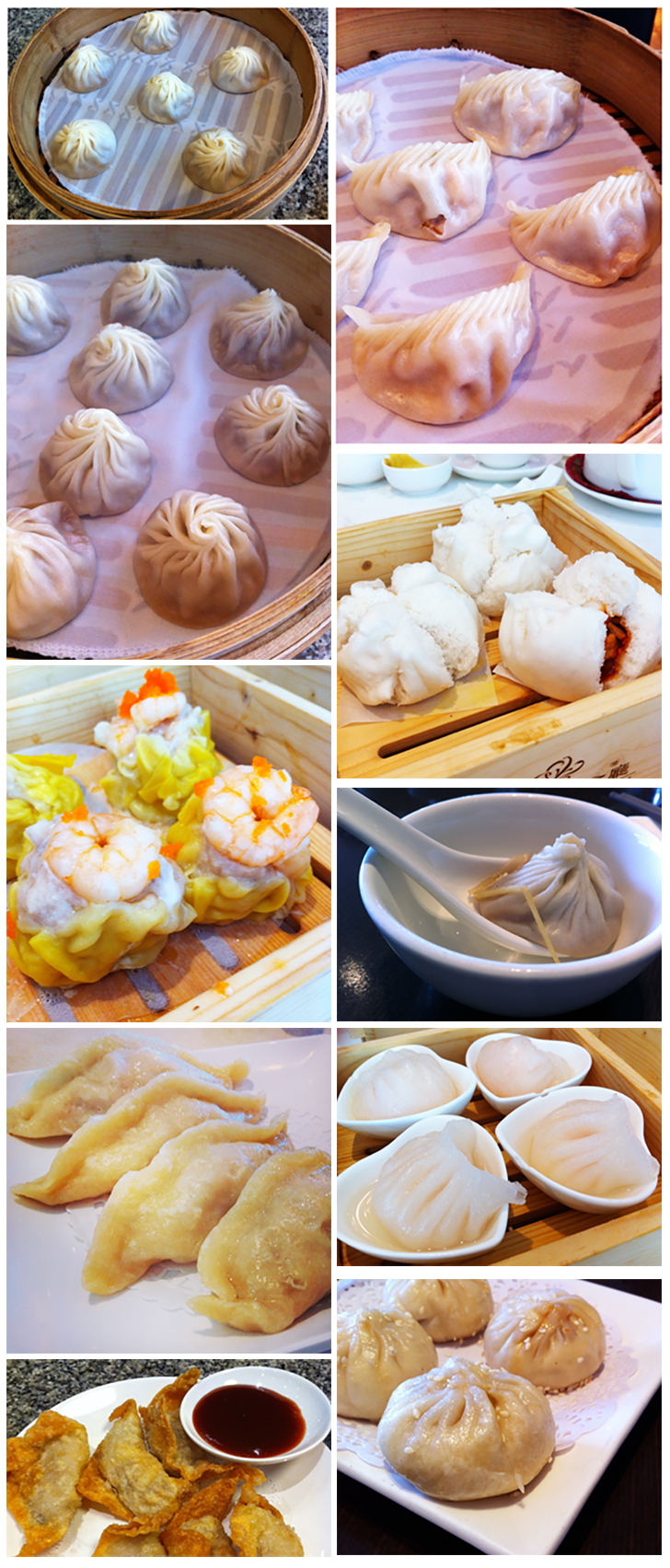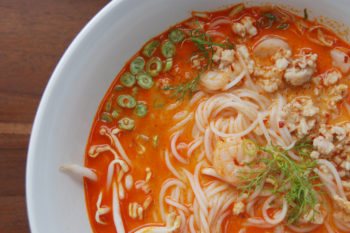The art of the dumpling and how legendary Din Tai Fung restaurant brought Taiwanese food to the world stage.
BANGKOK, Thailand – 6 p.m. and I’m #042.
I glance up at Din Tai Fung restaurant’s take-a-number display expectantly for the 20th time in the last five minutes, worshipping it like a false idol. My heart sinks; it’s still stuck in the #20’s and my stomach is gnawing in anticipation.
Pressing my face to the wall of glass I watch as workers in white uniform roll out, fill and deftly fold xiao long bao dumplings with surgical precision – at least 18 delicate folds twirled to a close at the top. It’s theatre-of-the-stomach. Great plumes of steam dramatically billow around them as towers of bamboo baskets are shuffled around.
Xiao long bao are mince meat (usually pork), soup-filled steamed dumplings and are Din Tai Fung’s signature fare. The best way to eat one is to gently pick it up with chopsticks (taking care not to tear the skin), dip its sagging belly in some red vinegar infused with fresh ginger, then pop the whole thing in your mouth for a succulent explosion of not-too-hot-but-just-right savoury filling. It is the same experience at every Din Tai Fung restaurant I have visited – in Australia, in Singapore, in Thailand, in my mother country Taiwan: Wait. Salivate. And when your number finally comes, feast.
The dumpling and me
Tibetan momos, Japanese gyoza, Chinese jiaozi, Turkish manti, Swedish pitepalt, Egyptian qatayef, German zwetschgenknödel and Slovenian Idrijski žlikrofi. Perogies, empanadas, wontons, samosas, potstickers, apple dumplings, tortellini and ravioli. Savoury or sweet, boiled, baked, steamed or fried. If there was ever a case to be made that humans have universal threads connecting us all, look no further than our love of plump pockets filled with yummy stuff.
Xiao long bao has its roots in Shanghai but it, as well as many other types of dumplings of all sizes, fillings and flavours are a big part of Taiwan cuisine and culture. Growing up in Canada, I remember my mum in the kitchen perched on a high stool, a sunny Sunday afternoon with a big bowl of ground pork mixed with vegetables and herbs from our garden. She would patiently sit, listening to the radio, stuffing and folding dumplings one by one. It would take hours to make enough for my family of six. My three older sisters and I would be recruited to help – except I being young and horrible, I found it boring and purposely did a terrible job (overstuffed, ugly folds, meat oozing from the edges) so my mother, in exasperation, would dismiss me and I could scamper away to watch TV.
There are basics to dumpling making that are essential: a neat, crimped edge, for example, or else the contents spill out in the pot, pan or steamer basket; equal amounts of filling in each one or else the cooking times would be uneven. While my family ate, it became almost like a fun game of who-made-which-one. My mother would hold up an ugly or clearly defective one and say, “你做了” – you made this. The exemplary 水餃 was held up and declared to belong to my sister. In Taiwanese culture, destroying your 8-year old child’s self-esteem with unrealistic, unattainable expectations of perfection and by encouraging sibling rivalry like a blood thirsty emperor lording over a gladiator match extends even to dumpling making. I didn’t care – it was delicious however it looked – and I sat stuffing my face, turning my sister’s perfect specimens into a bolus that went down into my belly.

Din Tai Fung: Xiao long bao, the little dumpling that could
But for some, dumplings are an art. If my sister’s were good, then Din Tai Fung’s are Michelangelos. Their xiao long bao are precise: 18 folds – no less – with a golden ratio of 5 grams pork to 16 grams dough. Each must weigh 21 grams.
The restaurant is a Taiwanese success story. What began as a small shop in Taiwan has grown into a franchise of over 76 restaurants in 10 countries including Japan, China, Singapore, Australia and USA. Each restaurant cranks out an average of 4,000-6,000 dumplings a day. The flagship restaurant in Xinyi district of Taipei can hit 11,000 pieces on weekends.

Founder Yang Bingyi was 21 when he left China in the throes of a civil war and immigrated to Taiwan. He worked his way up in a cooking oil business, then he opened his own in 1958. In the early 70’s, when cooking oil became readily available and business was failing, the shop began selling steamed dumplings. The rest, as they say, is history. His son Yang Jihua now holds the reigns and according to this 2011 Forbes article, the revenue in 2010 was $150 million. Two of their Hong Kong branches have been awarded a Michelin star. In 1993, New York Times rated it one of the world’s top 10 restaurants.
Keep Calm and Eat Dumplings
8 p.m. and I won’t reveal how many pieces I’ve just eaten. I waddle out of the joint looking like an overstuffed pork bun with legs. The take-a-number sign changes. People from the crowd hurry to the hostess and are ushered in.
Vegetable mushroom buns, steamed shrimp and chicken wontons, beef noodle soup, braised greens with oyster sauce. I’ve spent the last two years galavanting around the world and wherever I can find a Din Tai Fung, I visit and relish the taste of Taiwan. For me, home is where the dumpling is.
Just the Facts
Din Tai Fung has restaurants in Taiwan, Japan, USA, China, Singapore, Indonesia, Korea, Malaysia, Hong Kong, Australia, Thailand. Impostors have sprung up with the same name, check the website for list of locations.
http://www.dintaifung.com.tw/en/

